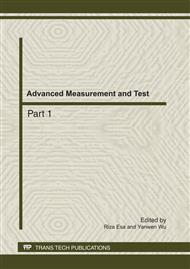p.610
p.617
p.623
p.629
p.635
p.641
p.646
p.653
p.661
Research on the Quantitative Analysis of Subsurface Defects for Nondestructive Testing by Ultrasound Lock-In Thermography
Abstract:
This paper describes the quantitative analysis of the shape, boundary, and depth of subsurface defects by ultrasound lock-in thermography. The phase difference between defective areas and non-defective areas illustrates the qualitative analysis of the shape and the boundary of the subsurface defect. In order to accurately estimate the shape, boundary and depth of the defects, the optimal threshold value method is proposed to identify the shape and boundary of the subsurface defects based on the canny operator of image processing. A self–adaption artificial neural network (ANN) with Takagi-Sugeno modeling is proposed to determine the depth of the subsurface defect. Experimental results for a steel plate with artificial subsurface defects show good agreement with actual values.
Info:
Periodical:
Pages:
635-640
Citation:
Online since:
July 2011
Authors:
Price:
Сopyright:
© 2011 Trans Tech Publications Ltd. All Rights Reserved
Share:
Citation:


